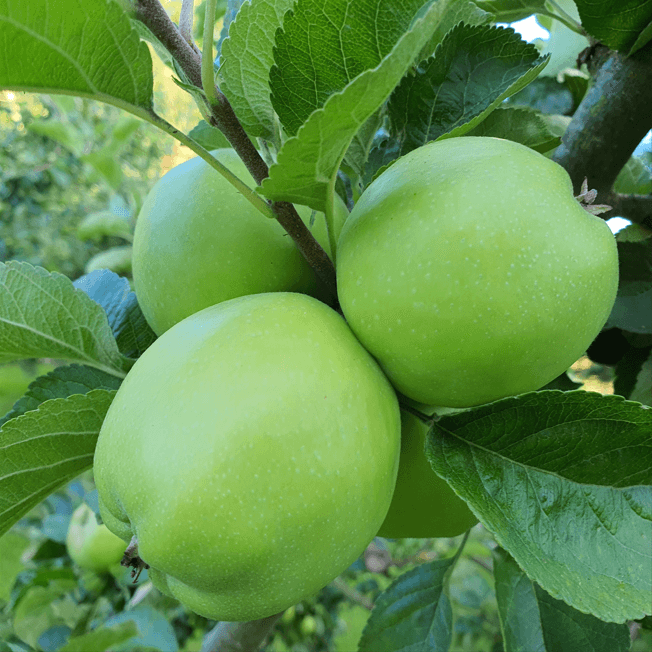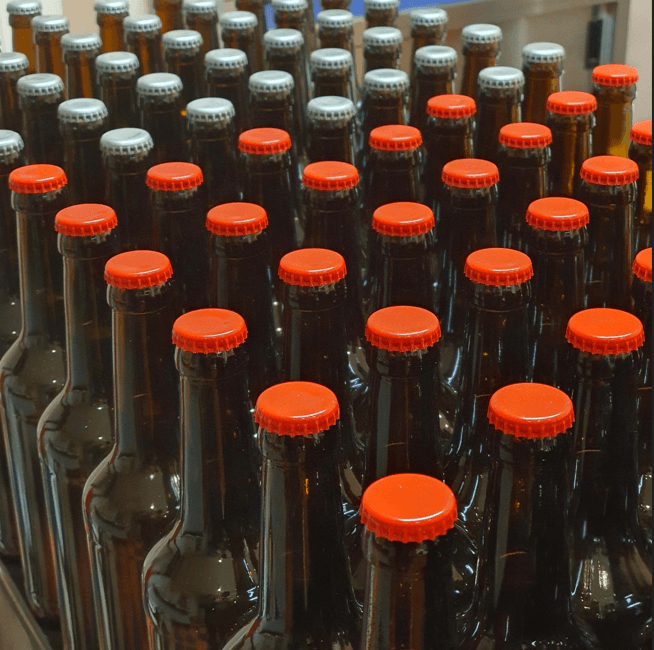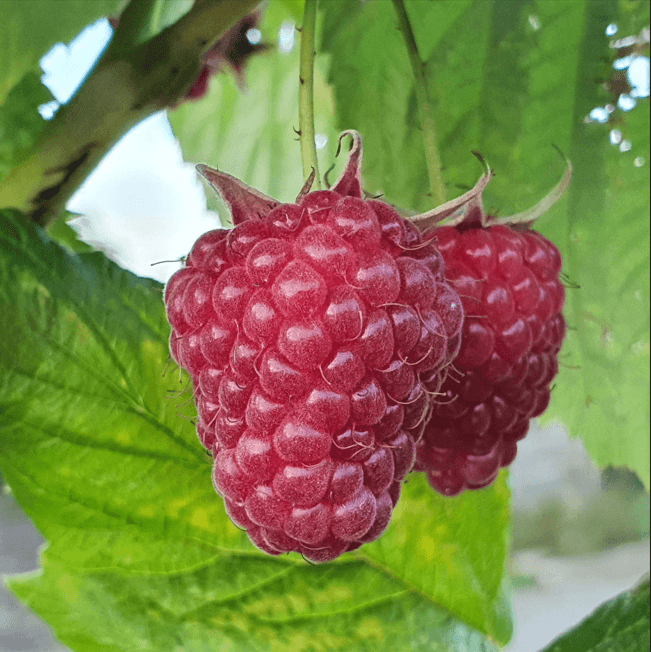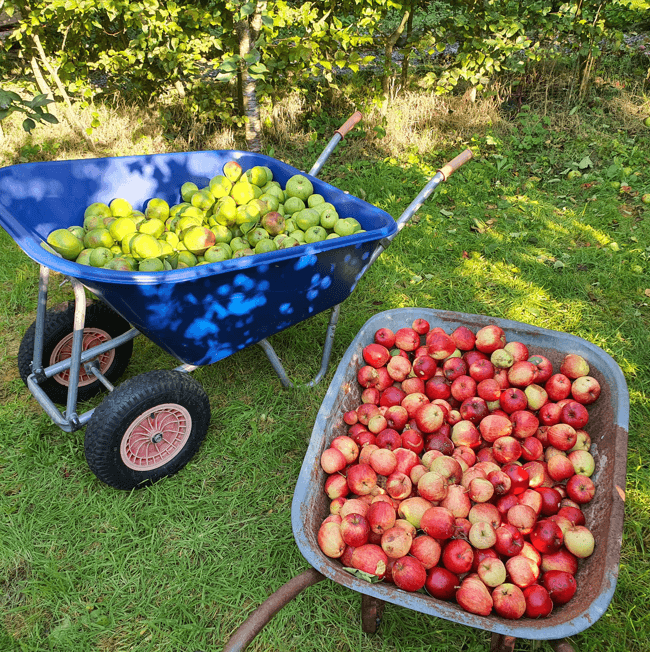As autumn arrives, Kilgraney House is graced with one of the season’s most delightful gifts, apples from our own heritage orchards.

In 1991, on a small farm in Co. Carlow, Anita Hayes sowed the seeds of a vision that would blossom into Irish Seed Savers Association. Founded with a deep reverence for the disappearing agricultural heritage of Ireland, this initiative stands as a living testament to the agricultural richness passed down by our ancestors. Anita orchestrated the project’s growth and sought expertise from individuals who shared her dedication. In 1996, Irish Seed Savers found a new home in Scariff, marking a pivotal moment in its journey and the creation of the Irish Heritage Apple Tree Collection in County Clare.
We sourced native Irish apple varieties from Irish Seed Savers in 2012 to create our own Irish apple tree orchard at Kilgraney. These native varieties offer flavours that are both rich and rare, giving us a unique taste of history and terroir right here in our garden. Although this year’s crop isn’t as bountiful as previous seasons, each apple still carries the charm of generations past, with flavours ideal for our favourite seasonal ritual: crafting crisp, dry cider.
A Heritage Orchard with Deep Roots
There’s something magical about Irish heritage apples. They’re a living legacy, preserving the flavours and resilience of varieties that have withstood centuries of change. Unlike the uniform sweetness of many commercial apples, these traditional Irish varieties bring complex flavours and a natural balance of sweetness, tartness, and depth to our cider. They’re grown with care and minimal intervention, making each harvest unique and each apple distinct.
Our heritage orchard represents a selection of varieties specifically suited to Ireland’s climate and soil. These apples ripen in late summer through early autumn, just in time for pressing and fermenting when our accommodation season ends. Some apples are spicy and robust, while others are crisp and mildly sweet, a diversity that lends itself beautifully to cider making.
Crafting our own Cider
Once harvested, we select and juice our apples to create dry, refreshing ciders for our enjoyment. Our process emphasizes simplicity and purity, allowing the flavours of these heritage apples to shine. Every batch is a little different, as we adapt our approach based on the unique profile of each year’s harvest.
When apples are plentiful, we sometimes make single variety ciders and if the flavour is to our liking we bottle them as individual variety ciders. If the variety isn’t to our liking, we blend two or more varieties to get the best from each batch.


One of our favourite traditions is adding a seasonal twist with the addition of juice from the autumn raspberries in our kitchen garden. We add the juice once the fermentation has slowed down and we’ve racked the cider to a fresh vat to settle for a while before bottling. The addition of the juice turns our cider a beautiful pink hue and brings a hint of fruitiness to each sip. This delicate balance of apple and raspberry creates a cider that’s as fragrant as it is flavourful—a perfect tribute to the bounty of the autumn season.
For a sparkling cider we charge each bottle with some carbonation drops, a convenient way to add additional sugars. Each drop contains a uniform weight of pure sugar to fuel carbonation in bottles. Yeast convert this sugar into CO2 inside the sealed bottles to create fizzy, carbonated cider. This second fermentation makes for a livelier and more refreshing beverage.
Autumn Apples Beyond the Orchard
Even if cider-making isn’t your thing, autumn apples can bring incredible flavour to your kitchen. Heritage varieties are ideal for seasonal treats like apple tarts, chutneys, or spiced apple preserves. Their unique flavour profiles make them versatile enough for both sweet and savoury recipes. And, of course, nothing beats biting into a fresh apple straight from the tree, a taste of the season in its purest form.
Experience heritage Irish apples yourself
Whether you’re an experienced gardener or just getting started, we’d encourage everyone to embrace the flavours of heritage Irish apples. Look for varieties originally grown in your locality or from across the length and breadth of Ireland. Some of the varieties have interesting names, often hinting to their county of origin such as: Ballyvaughan Seedling (Clare); Martins Seedling (Antrim); Greasy Pippin (Fermanagh); Irish Peach (Sligo); Gibbons Russet (Cork); Ard Cairn Russet (Cork); Loughtree of Wexford (Wexford); and Mrs Perry’s (Donegal). My favourite name in Bloody Butcher, with its red and yellow colouring, and associated with Kilkenny, Meath and Offaly in the early 20th century. Eaten fresh from the tree, it has a mild flavour.
Better yet, why not try your hand at cider-making? Even a small crop can yield a delicious result. By enjoying heritage apples and experimenting with traditional cider recipes, you’re helping to preserve a valuable piece of food history.
Planting, cooking, or pressing these apples brings you closer to the roots of Irish horticulture and rewards you with flavours that are as timeless as they are delicious.


